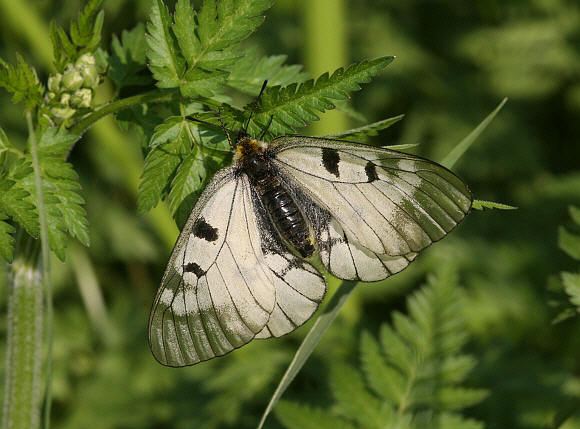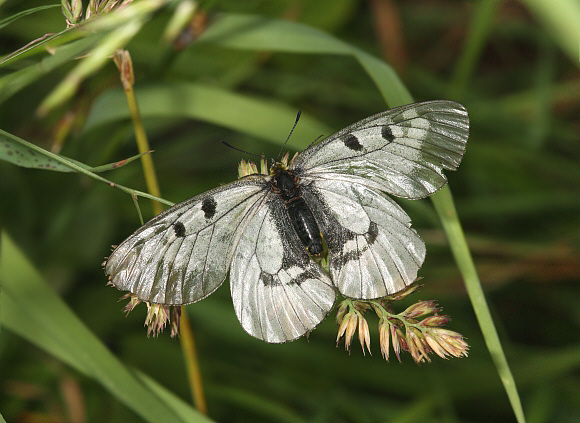 Clouded Apollo Parnassius mnemosyne Kercaszomor, Hungary – Peter Bruce-Jones
Clouded Apollo Parnassius mnemosyne Kercaszomor, Hungary – Peter Bruce-Jones
Introduction
The genus Parnassius, known commonly as Apollos, comprises of 54 species. Three of these are endemic to North America, a further 2 are found both in North America and the Palaearctic, and the remainder are distributed variously across Europe and temperate Asia.
Parnassius are instantly recognisable as a genus, having rounded translucent whitish wings that in most species are adorned with prominent white-centred red ocelli. P. mnemosyne is one of the few exceptions which lack the red ocelli.
Many Parnassius species are extremely rare and have a very localised distribution, but mnemosyne is very widespread, being found from Spain to central Asia.
 Clouded Apollo Parnassius mnemosyne B�kk plateau, Hungary – Peter Bruce-Jones
Clouded Apollo Parnassius mnemosyne B�kk plateau, Hungary – Peter Bruce-Jones
Habitats
This species breeds on rocky mountainsides and limestone pavements, typically choosing sites where there are flat boulders on which they can bask, and crevices or hollows in which they can hide during bad weather. The butterflies generally seem to prefer damper habitats than apollo.
They are generally found at altitudes between about 800-2500m.
Lifecycle
The larval foodplant is Corydalis solida.
Adult behaviour
In warm sunny conditions the butterflies fly actively from flower to flower, visiting mostly thistles and knapweeds. In cooler weather they often bask on lichen-encrusted rocks and boulders, or among grasses, just above ground level.
Copulation takes place at about midday, and lasts for about 2 hours, or longer if weather conditions are cooler. During copulation the females develop a large chitinous structure called a sphragis on their abdomens, which seals the genital opening and prevents other males from mating with them.
